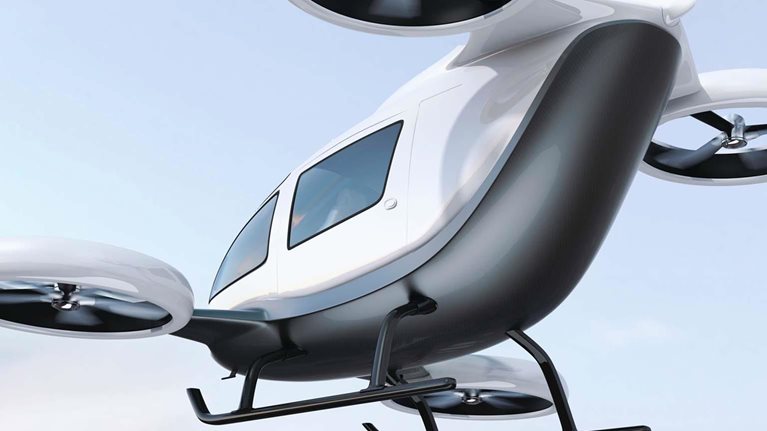As autonomous vehicle services roll out and scale, the pace and nature of that transition have significant implications across the mobility value chain. Mobility participants that have already experienced disruption—such as electrification—must consider localized mobility contexts, in addition to the evolution of autonomous-driving technology, in their assessment of autonomous mobility.
To provide clarity on how the autonomous-vehicle (AV) market could evolve, McKinsey has developed a granular Mobility Market Model that includes numerous modes of transport, using data from more than 2,800 cities and rural areas across more than 110 countries. The model projects miles traveled, light-vehicle sales, installed base, and environmental impact. Furthermore, it estimates the size of the value pools for both private and shared transport through 2030 and beyond and provides detailed insights for individual cities—including scenarios propelled by the COVID-19 crisis. As part of this effort, we also examined various outcomes for autonomous driving.
In a previous article, we discussed advanced driver-assistance systems (ADAS) and Level 3 (L3) and Level 4 (L4) autonomous-driving systems for highways in private car ownership. L3 refers to conditional automation, in which the system controls steering and acceleration while also monitoring the driving environment, but the system requires a human driver to perform certain dynamic driving tasks. In L4 systems, the autonomous system can perform dynamic driving tasks. This article focuses on shared AV services such as robo-taxis and robo-shuttles, which are on-demand taxi services using autonomous vehicles without a human driver, with a 2 to 6 occupant capacity for the former and a 4 to 10 occupant capacity for the latter. We highlight the potential of such services to make mobility cheaper for consumers and discuss key cost drivers, including local contexts and use cases. Our analysis suggests that unlike in traditional mobility, shared AV services will develop new rules for mobility in which operational and service-provisioning costs will play a pivotal role. Finally, we discuss implications of our findings for various industry players, including OEMs, tier-one suppliers, cities, AV technology players, and mobility-services operators.
Poised for disruption: Cost per mile for mobility in 2030
The adoption of robo-taxis and robo-shuttles depends on four main drivers: regulations, technology readiness, business-case attractiveness, and customer preference. Customer preference strongly depends on how the cost of these AV services compares with other mobility modes. While fully burdened costs for such services are very high today—because of the high cost of technology, development, and operations—they could decline significantly in the coming decade as AV technology advances and smarter, more seamless, multimodal mobility ecosystems emerge. Despite their additional technology costs, robo-taxis could become price competitive with private nonautonomous cars and even transit services (Exhibit 1).

We estimate that the cost per mile of a robo-taxi trip could be just 20 percent higher than that of a private nonautonomous car in certain contexts, depending on use case, geography, and local conditions such as city archetype (for example, large and sprawling versus dense). Robo-shuttles could be 10 to 40 percent cheaper than private nonautonomous cars, though less convenient. Moreover, depending on the context, the cost per mile for a personal (not pooled) robo-taxi trip could amount to just 40 to 50 percent of a driver-based ride-hailing trip. In addition to price, greater convenience could drive consumer acceptance of robi-taxis, along with the perception of safety if AV performance continues to improve. Furthermore, regulations will play a key role in shaping future mobility outcomes. New regulations that ban private single-rider vehicles from city centers or the imposition of congestion charges might make private cars less attractive and more expensive. Such actions could encourage users to switch to shared autonomous-mobility modes.
This disruption isn’t here yet—early robo-taxis will cost more (fully burdened) than today’s driver-based ride-hailing services—but we expect the difference between the two to disappear quickly (Exhibit 2). Our analysis shows that the cost per mile for a robo-taxi could drop by more than 50 percent between 2025 and 2030. The major drivers of this reduction include lower hardware costs due to declining costs of high-performance chips, operational improvements (such as lower maintenance needs and higher overall mileage), lower costs of mobility-services provisioning due to scale, a decrease in empty miles traveled, and greater economies of scale, which distribute development and validation costs across more vehicles.

Private vehicle costs include those for depreciation, operation (fuel, cleaning, maintenance, and parking), and fixed costs (not dependent on mileage) like insurance, financing, or registration (Exhibit 3). Despite the added costs for AV hardware and software, robo-taxis may see lower depreciation rates per mile compared with private cars by 2030 due to higher use and longer lifetime mileage. This cost advantage will necessitate purpose-built vehicles designed with higher durability for robo-taxi applications.

On the other hand, robo-taxis are expected to have much higher operating costs than private cars. Especially in the first years after the technology’s introduction, we expect AV systems will experience significant maintenance costs based on the need for regular checkups, time-intensive error tracking, and sensor service and recalibration. Maintaining remote vehicle-control centers will also contribute to costs. These centers ensure smooth operation, support passengers, and take charge of control systems if the robo-taxi experiences confusing “edge cases” such as entering a newly created and unmapped construction zone. We also expect a considerable need for regularly updated AV maps and related location-based services, such as road hazard warnings, friction maps, and traffic sign services. We also assume slightly higher energy usage among autonomous vehicles, driven especially by the additional energy required for sensors and high-performance computing. Finally, these vehicles will experience greater wear and tear and cleaning needs, particularly within vehicle interiors, because they will be used more than the average personal vehicle.
Mobility services account for the largest share of the total cost of robo-taxis, including payment-provider costs, customer app development and operation, and data analytics to drive strategic decisions on fleet size and service areas. These costs also include the cost of customer support, marketing, stakeholder management, and other general and administrative functions, such as legal, human resources, and finance departments.
Finally, cities will take different strategic approaches to robo-taxis depending on their needs. For example, cities looking to protect public transport or traditional taxis from lower-cost robo-taxis or robo-shuttles might introduce restrictive licensing plans. Others could subsidize pooled robo-shuttles as last-mile solutions—to and from public-transit stations—to attract more public transit passengers or to avoid added investments in bus-transit networks. Paris is just one example of a city shaping its mobility mix; there, local governments have expressed support for biking and walking over car-based mobility.1
Location, vehicle type, and scale will drive how much AV services cost
A robo-taxi fleet’s area of operation has an impact on its overall cost. For example, a robo-taxi trip in China could be 5 to 25 percent cheaper than a trip of the same length in the United States (Exhibit 4). The differences would result from lower labor and energy costs as well as lower base-vehicle costs resulting from different customer requirements. Despite this difference, buying-power variation across geographies might still make for a strong business case in support of AVs.

City density will also play a significant role in the per-mile costs of shared AV services. For areas with lower population density, robo-taxis will have a higher share of empty miles (miles driven without generating revenue; that is, with no occupant), requiring fleets to charge more for loaded miles (miles driven with revenue generation; that is, at least one occupant) to compensate. The difference in cost per mile between a public transit–focused top 25 city such as Philadelphia and a car-dependent peripheral city such as Indianapolis could be about 50 percent.
Vehicle type could have an even larger impact on cost per mile and consequently on end-customer prices. The per-mile price of an SUV-sized premium robo-taxi could be double that of a two-seater.
A robo-shuttle that travels in a small area at relatively low speeds, such as from an apartment block to the nearest subway station, could cost half as much as one that travels between a stadium and distant parking lots. The difference comes mainly from the reduced costs for the low-speed AV system due to different sensor and computing requirements. For example, such a system would not require long-range LiDAR and would have lower maintenance and mobility provisioning costs. If the lower-speed robo-taxi were part of the public transit network, there could be less need for expensive marketing or dedicated payment processes.
Operational scale also affects robo-taxi costs on a global level, given the high initial investment that fleets must amortize. Players at scale could likely achieve price points six to eight times lower than those of subscale rivals looking to build end-to-end operations that include assembling the technology stack and operating fleets of robo-taxis. We therefore believe that players who initially focus on selected local markets will eventually have to partner with at-scale players and rely on local operational excellence to remain competitive.
Implications for industry stakeholders
The extended robo-taxi ecosystem includes a variety of players, from automakers and their traditional top-tier suppliers to leading technology players, mobility-services providers, cities, and transit agencies and regulators.
Automakers. OEMs that want to enter the robo-taxi industry as vehicle providers need to develop purpose-built vehicles with best-in-class durability, low maintenance costs, and high uptime availability. Predictive maintenance, modular battery sizes, and fast-charging capabilities are the primary drivers for increased availability. If OEMs want to become robo-taxi players themselves, they need to prepare for major changes by becoming mobility-services providers and by seeking partners, investors, and AV technology providers to orchestrate a full-stack solution. Alternatively, an OEM could offer an integrated robo-taxi vehicle with in-house AV stack but find partners for the mobility-services offer.
Mobility-services providers. Given the industry’s intense focus on operational excellence, providers should concentrate on becoming market leaders in a few cities, not niche players in many, to capitalize on economies of scale in support of infrastructure such as vehicle-control centers or local robo-taxi hubs. Providers should put a high priority on reducing the costs of operations and mobility-services provisioning. For example, they can pursue smart strategies regarding where to build mobility hubs and when and how fast to charge vehicles. They can also invest in smart algorithms for route planning and demand forecasts to reduce the number of empty miles their robo-taxis must travel.
Cities and transit agencies. Municipalities can influence pricing via subsidies or license costs to steer their mobility mix. Such moves might involve trying to build integrated transit systems that combine different mobility modes or taking steps to make robo-shuttles more attractive than private cars but less attractive than urban transit. Cities could also lease conveniently situated properties to robo-taxi players to lower the costs for empty rides between robo-taxi hubs and serviced areas.
Suppliers. Suppliers should understand where to allocate their R&D spending, especially regarding improvements in AV durability and energy demand. Some might consider changing their business models, shifting from parts vendors to AV-maintenance providers or vehicle-control-center operators. Many will likely seek partnerships across the automotive ecosystem to link up with aftermarket players, for example.
AV technology players. AV technology players need to critically define their role in the ecosystem and the level of partnerships they need. These players can work across the AV tech stack through mobility-services provisioning while sourcing their base vehicles, license their technology to partners, or fulfill engineer roles for a series of partners, from OEMs to mobility-services providers.
Despite some setbacks, the robo-taxi revolution is ongoing. As we learn more about what it will take to make robo-taxis a large-scale reality, the industry must shift focus from the still-formidable technology challenges toward workable total-cost-of-ownership (TCO) models and other cost considerations (see sidebar, “TCO: Sensitive to sensitivities”). Getting the economics right for robo-taxi success will require adequate scale, the creation of a strong AV ecosystem, and pervasive operational excellence.

